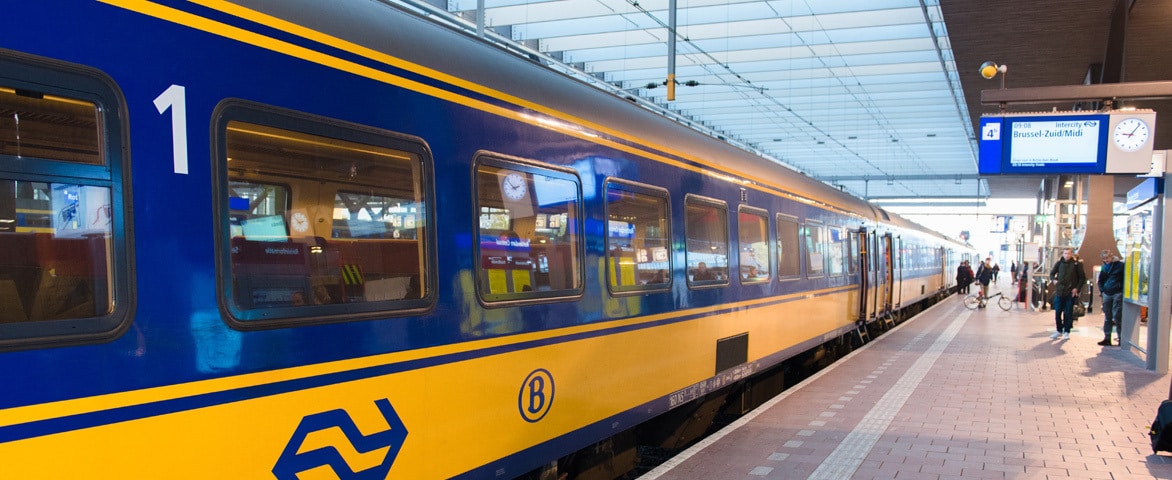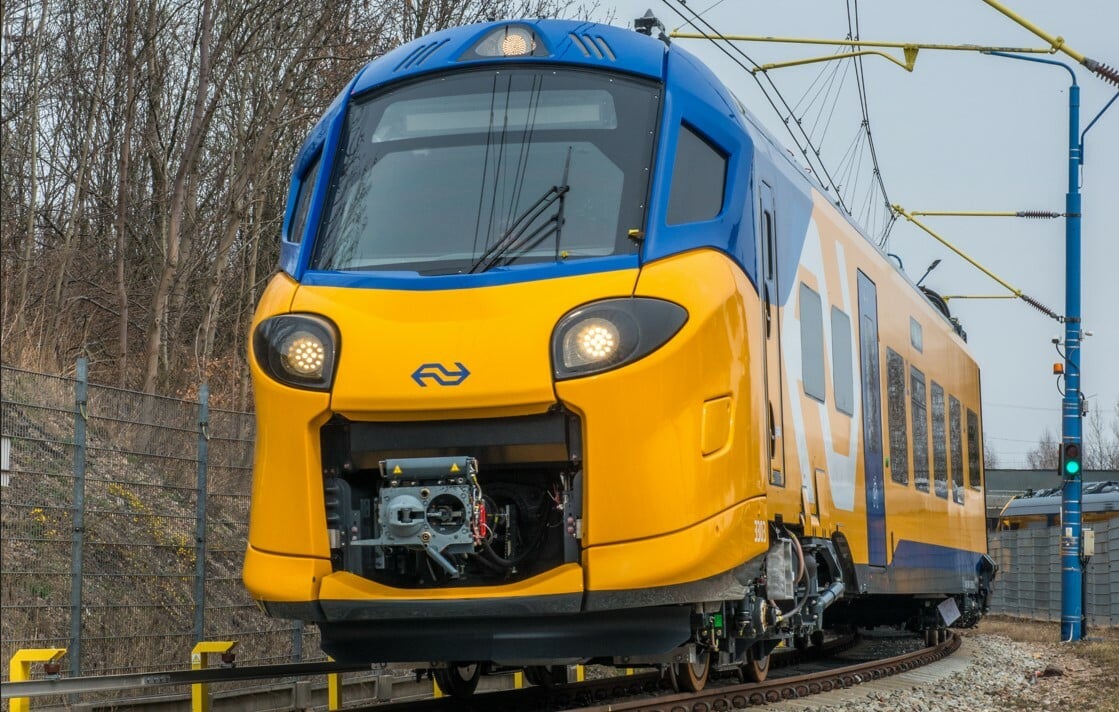They have been running between Brussels and Amsterdam since 1975. The yellow and blue Benelux trains symbolise a long love affair between the two cities. The Dutch sometimes call it the Brusselaar. The Belgians might refer to it fondly as the Amsterdammer.

© NS
The trains pass through some of the great cities of the Low Countries. You would spot the spires of Mechelen, the cranes of Antwerp port, the little streets in Delft where Vermeer lived, and the sudden skyscrapers of Rotterdam.
But for most passengers, it is the destination that matters. The Belgians would head to Amsterdam for Dutch art, modern design and Anne Frank. The Dutch might be drawn to Brussels for its urban grandeur, contemporary dance and Belgian fries.
Tourists from other, larger, countries might think there is no difference between the Netherlands and Belgium. But the Dutch and the Belgians know that is not true. It’s more chaotic in Belgium, the Dutch say. The Dutch are louder, the Belgians claim. Our cows are cleaner, the Dutch point out. Our food is better, the Belgians argue.
The temperature often drops a degree or two as you head north. The temperament also changes. But not in a big way.

© NS
The Benelux train conductors speak fluent Dutch, French, German and English. They have to deal with endless problems. Tourists sitting in the wrong seats (first class seats are red, second class blue). Pickpockets. Luggage in the corridors. People who can’t find the ticket they bought online. It’s not an easy job. But the conductors remain courteous in all four languages.
There have been changes over the years. For a brief period in late 2012, a new high-speed train called Fyra was introduced to replace the Benelux trains. But Fyra kept breaking down, and was taken out of service after just a few embarrassing weeks. The Benelux trains were brought back.
You can now take a fast Thalys train or even a Eurostar between Brussels and Amsterdam, cutting the journey time by an hour. The Benelux trains, mostly dating from the 1980s, are rather dated models.
The journey is slow. It takes over three hours. But it is still a popular service, offering cheap tickets and frequent trains.
 From 2025, new Benelux trains will make the journey between Brussels and Amsterdam about 45 minutes shorter than today.
From 2025, new Benelux trains will make the journey between Brussels and Amsterdam about 45 minutes shorter than today.© NS
From 2025, twice as many intercity trains will run daily between Brussels and the Netherlands: 32 instead of 16. The Benelux train will have a new timetable and new trainsets.
A journey will take about 45 minutes less than now, as the new trains can travel 200 kilometres per hour, compared to 160 kilometres per hour for the current ones. In addition, adjusting the timetable will contribute to a faster ride.
Almost 50 years on, the Benelux train still seems the best way to get from A to B.












